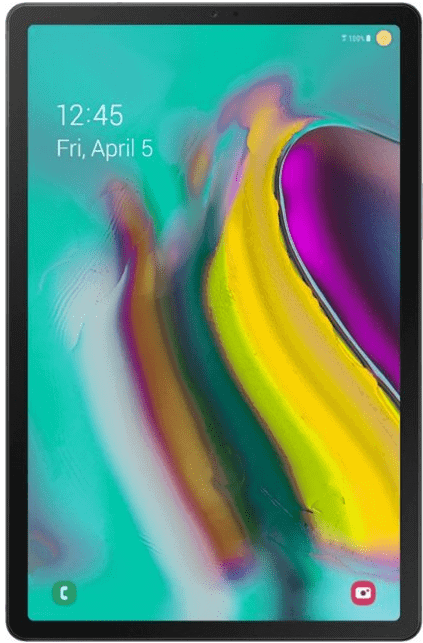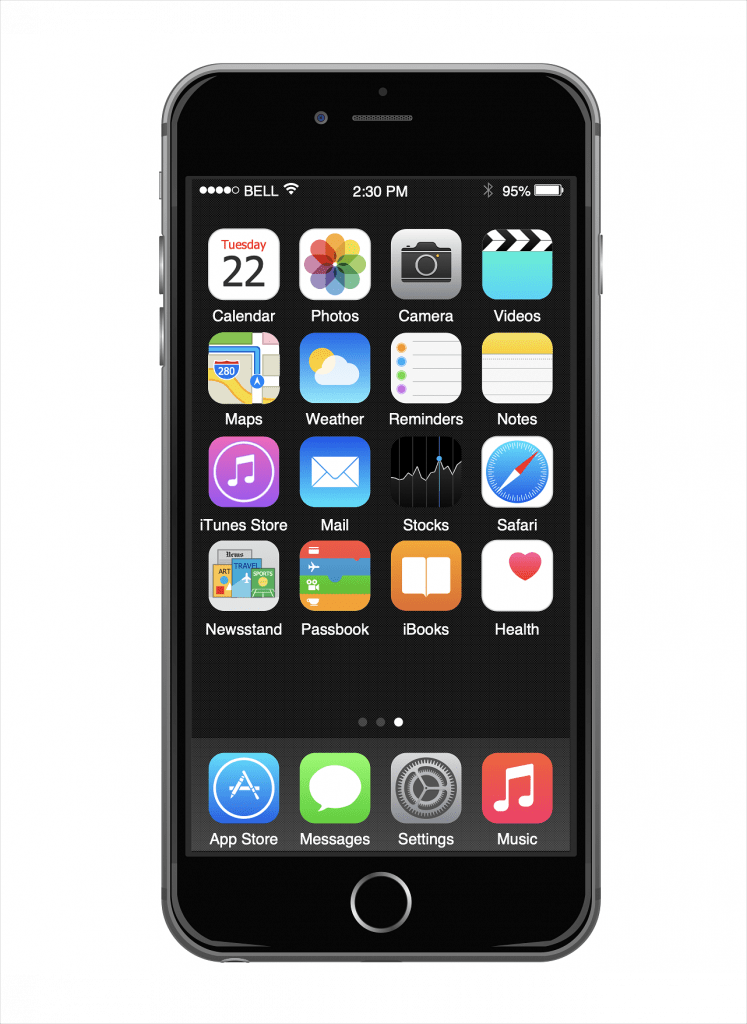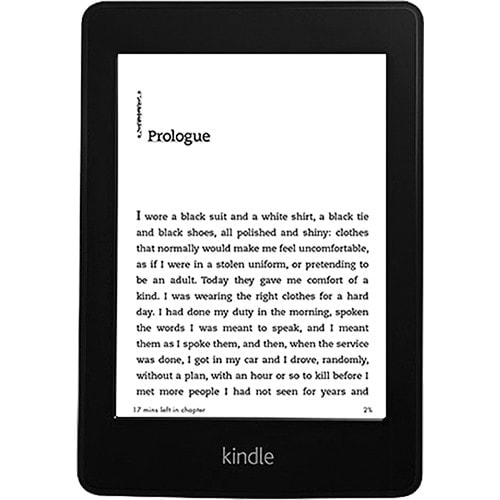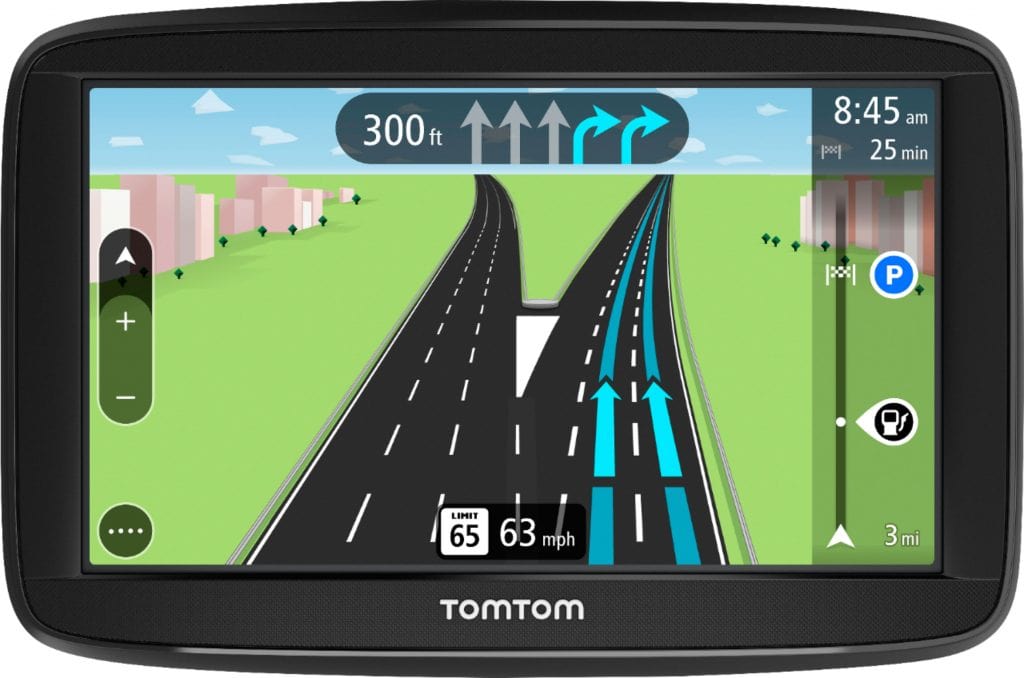Compare and Contrast the Characteristics of Various Types of Mobile Devices
Tablet
Tablet computer, or tablet PC is a mobile computing device designed to be held in one or two hands. It is approximately the size of a hardcover book (seven inches or bigger), and resembles a large smartphone.
Tablets let you do many of the same things as a traditional computer. They can browse the Internet, connect to social network apps, and display HD videos. They excel at applications that do not require a large amount of precise user input.
Early tablet devices used light pens or a stylus as their input device. However, today all tablets use a touch screen as their primary input device with the option to connect external devices, such as a keyboard. Most tablets only have a few physical buttons; the back, power, and volume buttons. Everything else can be done using your fingers.
Today, the top two operating systems used with tablets is Apple iOS used with iPads and Google Android used with Android tablets. A tablet can have apps installed on it to perform a function. For example, the Safari app on iPads is the browser that allows you to browse the Internet. On Android tablets, the Chrome app is often the default browser.

Smartphone
A smartphone is a cell phone that allows you to do more than make phone calls and send text messages. Smartphones can browse the Internet and run software programs like a computer. Smartphones use a touch screen to allow users to interact with them. There are thousands of smartphone apps including games, personal-use, and business-use programs that all run on the phone.
What can a smartphone do?
Smartphones are loaded with features and capabilities that make them more than a phone. Below is a listing of the most popular features of a smartphone.
Make and receive phone calls text messages.
Take, show, and store pictures and video.
Browse the Internet, as well as send and receive e-mail.
GPS capability for location and navigation.
Record and play audio and music.
Display time and date and other functions such as alarm clock, stopwatch, and timer.
Display weather and temperature information.
Voice dictation and take notes.
Virtual assistant using Siri, Google Assistant, or Cortana.
Access utilities, such as a flashlight, e-book reader, and calculator.
More advanced smartphones are now foldable, which enables them to change between that standard smartphone and tablet screen sizes. For example, the Huawei Mate X can unfold to provide an 8-inch screen.

E-reader
An e-reader (electronic reader) is a device for reading content, such as e-books, newspapers and documents. A standalone e-reader typically has wireless connectivity for downloading content and conducting other Web-based tasks. Popular dedicated e-readers include Amazon’s Kindle and Sony Reader.
The Sony Reader was one of the earliest e-readers. Sony Reader PRS 700 weighs 10 ounces and features a 6″ display. A touchscreen features a virtual keyboard for navigation and note taking and there’s an LED light built in for reading in low light conditions. One charge is good for 7500 page turns. The device has 512 MB of memory.
Amazon’s Kindle 2 weighs 10.2 ounces and has a 6″ display. The device features a small built-in keyboard beneath the display. Kindle supports limited text search. User-accessible memory is 1.4 GB, enough for 1500 books. The Kindle DX has a 9.7″ display.
Plastic Logic’s e-reader, called “Dossier” in development, is optimized for business use. The device supports Microsoft Office documents, such as Word and Excel. The display is 8.5″ X 11″. Dossier general release is planned for 2010.
Mobile devices that can display text, such as smartphones and PDAs, can also function as e-readers.

GPS
GPS stands for “Global Positioning System.” GPS is a satellite navigation system used to determine the ground position of an object. GPS technology was first used by the United States military in the 1960s and expanded into civilian use over the next few decades. Today, GPS receivers are included in many commercial products, such as automobiles, smartphones, exercise watches, and GIS devices.
The GPS system includes 24 satellites deployed in space about 12,000 miles (19,300 kilometers) above the earth’s surface. They orbit the earth once every 12 hours at an extremely fast pace of roughly 7,000 miles per hour (11,200 kilometers per hour). The satellites are evenly spread out so that four satellites are accessible via direct line-of-sight from anywhere on the globe.
Each GPS satellite broadcasts a message that includes the satellite’s current position, orbit, and exact time. A GPS receiver combines the broadcasts from multiple satellites to calculate its exact position using a process called triangulation. Three satellites are required in order to determine a receiver’s location, though a connection to four satellites is ideal since it provides greater accuracy.
NOTE: Since GPS receivers require a relatively unobstructed path to space, GPS technology is not ideal for indoor use. Therefore, smartphones, tablets, and other mobile devices often use other means to determine location, such as nearby cell towers and public Wi-Fi signals. This technology, sometimes referred to as the local positioning system (LPS), is often used to supplement GPS when a consistent satellite connection is unavailable

Categories
A+ certification develops PC hardware and software troubleshooting skills. Professionals in the information technology industry may find A+ certification to be an advantage when searching for jobs. Technicians that have the certification tend to earn 5 to 15 percent more than those that don’t. Some employers require A+ certification for entry-level technical support positions. IT professionals that obtain the certification pursue many career paths, such as technical support specialist and IT support administrator.






